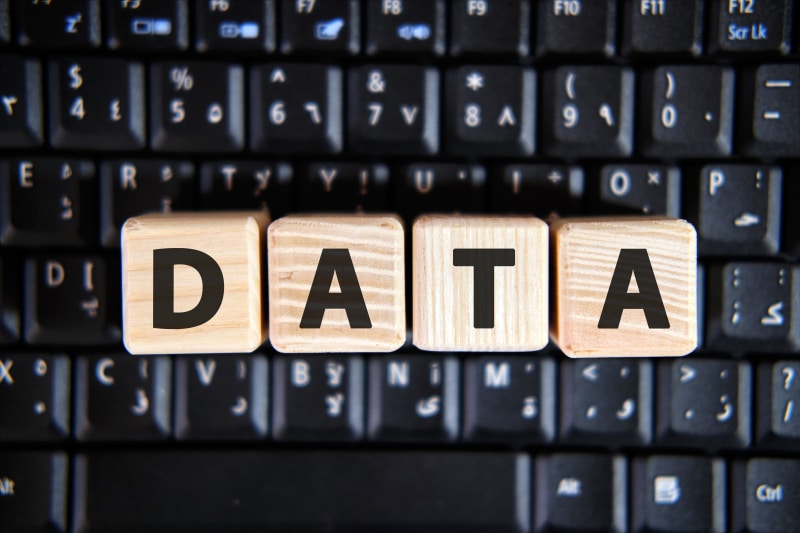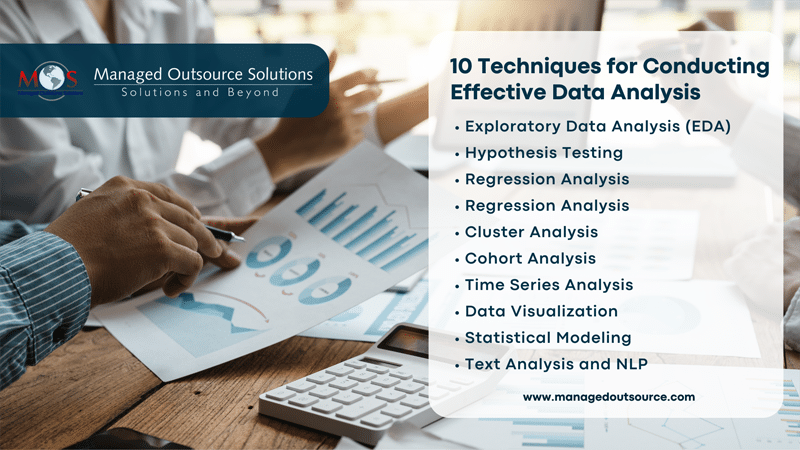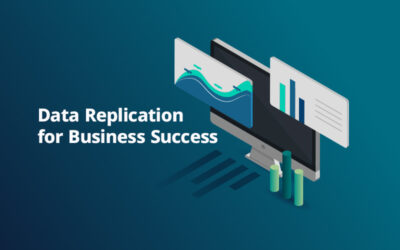Unlocking the power of data to guide business decisions and discover new opportunities relies on using smart data analysis techniques. Just like a detective unravels a complex case, big data analytics enables organizations to dig deep into vast and varied datasets. By uncovering valuable insights from this sea of information, organizations can make wiser and more informed business choices. This data-driven approach isn’t just a trend; it’s becoming a game-changer in various industries, including banking, manufacturing, telecom, insurance, transportation, government, utilities, and more. These industries are increasingly relying on data analysis to understand patterns, predict trends, and ultimately make decisions that drive success. And this is where business process outsourcing services come into play, helping organizations boost the efficiency and effectiveness of the entire data analytics process. Having a reliable partner that helps businesses make sense of their data ensures that every piece of information contributes to smarter and more strategic moves.
There are different types of techniques for extracting useful information from raw data. Depending on the type of data in question and the insights required, data analysts need to use effective data analysis techniques to harness the full potential of the information.
10 Data Analysis Techniques
The two basic methods are qualitative data analysis techniques and quantitative data analysis techniques.
Quantitative data analysis involves the use of numerical data and statistical methods to draw conclusions and make inferences. This method focuses on objective measurements, quantifiable variables, and statistical models. For instance, consider an email marketing campaign aimed at increasing product sales. Collecting and analyzing data such as number of emails sent, emails opened, click-through-rate (CTR) and purchases can provide insights into the performance of the campaign. This will allow marketers to assess engagement levels and the overall success in driving product sales.
Qualitative data analysis involves the examination of non-numerical data to identify patterns, themes, and insights. It can provide rich insights into customers’ experiences and perceptions. For example, suppose a company has introduced a new mobile app, qualitative data analysis can provides rich insights into customers’ perceptions and experiences with the product.
Effective data analysis involves a combination of techniques to extract meaningful insights from raw data. Here are 10 key techniques for conducting effective data analysis:
- Exploratory Data Analysis (EDA): The EDA technique is used to understand and visualize data sets. It aims to discover patterns, relationships, and insights within the data before undertaking in-depth analysis. This method involves summarizing the main characteristics of the data, such as central tendencies, distributions, and correlations, and identifying any missing or outlier values. EDA uses a combination of statistical techniques, visualizations, and data manipulation methods to visually and statistically explore the data.
- Hypothesis Testing: Hypothesis testing is used to determine if observed patterns or differences in the data are statistically significant. Common tests include t-tests, chi-square tests, and ANOVA.
- Regression Analysis: This is a process of testing whether an assumption or hypothesis about a population parameter is supported by the available data. Regression analysis is conducted to model the relationship between variables. Linear and logistic regression are used to understand how one variable influences another.
- Machine Learning (ML): ML automates the process of extracting insights from large and complex datasets, making it a powerful tool for data analytics. ML algorithms are employed for predictive modeling and classification tasks. Techniques such as decision trees, random forests, support vector machines, and neural networks can uncover complex patterns in data.
- Cluster Analysis: This analytic technique aims to group similar objects or data points together into clusters. The goal of cluster analysis is to discover patterns or structures in the data without any prior knowledge or labels. It is widely used in customer segmentation, market research, image analysis, social network analysis, and anomaly detection.
- Cohort Analysis: Cohort analysis, a branch of behavioral analytics, involves dissecting data from a specific dataset. Instead of treating all users as a singular entity, it segregates them into related groups, termed cohorts, based on shared characteristics or experiences within a defined time period. For instance, by scrutinizing customers’ actions within the customer life cycle can help identify behavioral patterns at different stages of the customer journey. This analysis can span from their initial visit to your website, progressing through email newsletter sign-up to their initial purchase, and beyond.
- Time Series Analysis: This is a statistical method used to analyze and understand patterns, trends, and relationships within a sequence of data points over time. Time series analytics used to model data such as stock prices, weather data, sales figures, or sensor measurements and make forecasts based on historical patterns and trends.
- Data Visualization: Creating effective data visualizations such as charts, graphs, and dashboards can communicate insights clearly. This can help present complex information in a visually appealing and understandable way.
- Statistical Modeling: Advanced statistical models are used to understand complex relationships within the data. Techniques such as multivariate analysis of variance (MANOVA) or structural equation modeling (SEM) may be relevant in certain contexts.
- Text Analysis and Natural Language Processing (NLP): Text analysis and NLP techniques are employed to extract insights from unstructured text data. This includes sentiment analysis, topic modeling, and named entity recognition.
Combining these techniques in a systematic manner can generate more robust and actionable insights from your data. It is crucial to customize the approach according to the unique features of the data and the objectives of the analysis.
How Data Analytics Makes the Difference
Data analytics aims to unveil secret patterns, unexpected connections, market trends, and what customers really want. These revelations give organizations the ability to spot new challenges, risks, and golden opportunities, guiding them towards making savvy and well-thought-out business choices. Analyzing big data contributes make day-to-day operations smoother, supports strategic decision-making, and ultimately helps businesses stay ahead of the game.
- Identifies Patterns and Trends: By analyzing extensive datasets, analytics uncovers patterns, trends, and correlations not visible through traditional methods. These insights support informed decision-making. For instance, an e-commerce company, using traditional methods like small transaction samples or feedback forms, may gain limited insights. However, analyzing a comprehensive dataset, including purchase history and preferences, reveals intricate patterns. For example, analytics may reveal that customers who buy item A are likely to purchase item B within a specific timeframe or show a connection between the time of day and customer product preferences.
- Enables Customer Understanding and Personalization: Identifying customer segments based on preferences, purchase history, and demographics, data analysis leads to more targeted and effective marketing strategies. Amazon is a classic example of a company that leverages data analytics to optimize its operations and provide a seamless, personalized shopping experience for millions of customers across the world. Amazon employs data analysis on extensive customer information, including browsing patterns, purchase records, and product ratings, to offer tailored product suggestions. Marketing strategies are tailored for each segment. For example, customers who frequently purchase a specific product category may receive promotions related to those items, and so on. This strategy enables the e-commerce giant to present customers with items that align closely with their interests, significantly enhancing the likelihood of successful purchases.
- Supports Targeted Advertising: Netflix is a great example of effective big data analytics employed for making personalized recommendations for targeted advertising. With a massive subscriber base exceeding 231 million, the company leverages extensive data collection, a cornerstone in solidifying Netflix’s industry standing. For subscribers, the personalized experience is evident in the tailored movie suggestions provided. This customization is driven by the analysis of past search and viewing data, offering insights into each subscriber’s preferences.
- Drives Digital Transformation: Data and analytics play a central role in driving digital transformation, enhancing decision-making in dynamic business landscapes. Take the healthcare industry as an example: replacing paper-based patient records with digitized data and analytics leads to a transformative shift. Patient information is centralized, facilitating real-time analysis for quicker and more precise decision-making. The integration of predictive analytics also allows early detection of health trends, revealing the power of data-driven strategies in evolving sectors like healthcare.
- Boosts Operational Efficiency: Using data analytics optimize processes and resource allocation. For instance, in the manufacturing process, implementing data analytics makes it more responsive to real-time demands and reduces inefficiencies. By analyzing equipment performance data, for example, manufacturers can predict potential breakdowns and schedule maintenance properly to reduce downtime.
- Risk Mitigation: By analyzing historical data and predicting potential future challenges, businesses can discover and manage risks. Utilizing predictive analytics enables them to forecast future trends and outcomes, driving proactive decision-making. In financial institutions like banks utilize advanced analytics techniques to evaluate a customer’s credit history, financial behavior, and other relevant data to assess their creditworthiness more accurately. Improved credit risk assessment leads to more accurate lending decisions, reducing the likelihood of defaults.
- Fraud Detection: Data analytics is helpful in detecting anomalies and patterns indicative of fraudulent activities, enhancing security measures. For instance, banks employ data analytics algorithms to analyze transactions in real-time, identifying unusual patterns or deviations from a customer’s typical behavior, triggering immediate alerts for potential fraud. This allows the financial institution to make informed decisions regarding fraud prevention.
- Strategic Planning: Businesses can formulate and refine their strategic plans based on insights gained from data analytics, adapting to market dynamics and changing conditions.
According to Sarah James, Senior Director Analyst at Gartner, digital business offers organizations an extensive array of opportunities to generate business value. Data and analytics have progressively emerged as pivotal catalysts for business success. The potential for data-driven business strategies is now more significant than ever, further fueling the momentum of digital transformation and data-centric business approaches Gartner has formulated over 100 strategic planning assumptions for data and analytics, spanning the years up to 2028. These assumptions are categorized into four groups, addressing the future of the following strategic areas: core data and analytics, IT leadership, data and analytics in digital business functions, and data and analytics in industry verticals (www.garner.com).
- Performance Measurement: Data analytics provides metrics and key performance indicators (KPIs) for measuring and evaluating the performance of various business aspects. For example, when it comes to web performance, analyzing metrics such as page views, bounce rate, and time on site indicate how visitors are engaging with your site. Evaluating Key Performance Indicators (KPIs) such as conversion rates, click-through rates, website loading speed allow you to measure your website’s performance.
- Employee Productivity: Analyzing employee data can lead to insights on productivity patterns, allowing organizations to optimize workforce performance. For instance, consider an IT company that wants to improve the productivity of its software development team. Analyzing employee data such as work hours on specific tasks, time taken to complete different projects, task assignment, and effectiveness of collaboration among team members will provide actionable insights that the company can use to optimize work processes, improve productivity, and create a more conducive work environment for its software development team.
- Cost Reduction: By identifying inefficiencies and optimizing resource utilization, data analytics contributes to cost reduction and improved financial performance. Consider a company looking to optimize its supply chain operations. Implementing real-time monitoring and analytics to identify bottlenecks and inefficiencies in the supply chain, can lead to cost reductions and faster order fulfillment.
- Regulatory Compliance: Data analytics plays a crucial role in bolstering regulatory compliance by offering transparency into processes and practices, thereby reducing legal risks. The U.S. Department of Justice (DOJ) underscores the significance of robust data analytics in anti-corruption compliance programs. For instance, scrutinizing financial transactions, employee expense reports, and other pertinent datasets enables the identification of irregular patterns like inflated invoices, excessive expenses, or suspicious payments. Companies can then implement automated monitoring systems to flag such activities, investigate them and take necessary remedial actions promptly to ensure regulatory compliance (www.law.com).
How Data Cleaning Services Support Analytics
Data cleansing and preprocessing are foundational or initial steps in the analytics process. By identifying and rectifying missing values, outliers, inconsistencies, and inaccuracies in the dataset, data accuracy ensures more trustworthy results.
Data cleansing is an integral component of the support offered by business process outsourcing companies. These reliable data cleansing service providers clean and preprocess data efficiently, helping businesses to obtain more meaningful and relevant insights from analytics. When stakeholders can trust the data quality, they are more likely to have confidence in the results and conclusions drawn from the analytics. This is crucial for making informed business decisions.
Leverage best-in-class BPO solutions for operational excellence!





